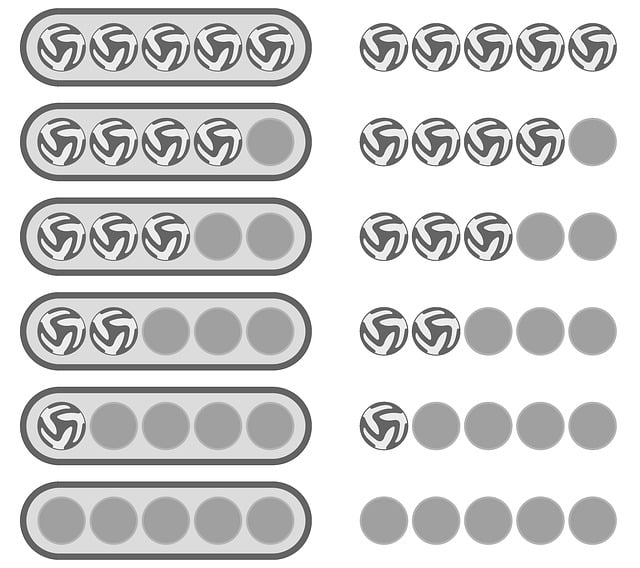Star Rating Markup (Review JSON-LD) is a powerful SEO tool that enriches search engine results with user data, enhancing user experience and business visibility. By implementing structured data, search engines display star ratings and review counts directly in listings, fostering trust and transparency. This encourages positive reviews and improves click-through rates, making businesses stand out in competitive markets. Integrating Star Rating Markup alongside Review Count SEO practices is a best practice that boosts online visibility and engagement, guiding consumers to make informed purchasing decisions.
In today’s digital landscape, online reviews hold immense weight in consumer decisions. Enhancing schema markup for individual and aggregate reviews, specifically with star rating and review count, can significantly boost visibility in search listings. This article delves into the intricacies of schema markup for reviews, focusing on the crucial role of star rating markup and its implementation. We’ll explore best practices, technical considerations, and tools to ensure optimal display, elevating your business’s online presence.
- Understanding Schema Markup for Reviews
- The Role of Star Rating Markup
- Implementing Individual Review Star Ratings
- Aggregate Review Count Integration
- Best Practices for Display in Search Listings
- Technical Considerations and Tools
Understanding Schema Markup for Reviews

Schema Markup for reviews is a powerful tool to enrich your search engine results with valuable user data. By implementing structured data using Star Rating Markup and Review JSON-LD, you provide search engines with essential details about individual reviews as well as aggregate review performance. This allows them to display star ratings and review counts directly in your search listings, enhancing both the user experience and your website’s visibility.
Understanding how Schema for Testimonials works is crucial for optimizing your online presence. The Review JSON-LD format offers a structured way to convey information about reviewer sentiments and quantities. This, coupled with proper implementation of star ratings, enables search engines to index your reviews accurately, boosting your site’s SEO in terms of Review Count SEO. By presenting this data transparently, you not only build trust with potential customers but also ensure your business appears more appealing and credible in the eyes of search algorithms.
The Role of Star Rating Markup

The implementation of Star Rating Markup plays a pivotal role in enhancing user experience and search engine optimization (SEO) for individual and aggregate reviews. By integrating star ratings directly into search listings, users gain immediate visual cues about the overall satisfaction levels expressed by other customers. This simple yet effective method allows potential reviewers to make informed decisions, fostering transparency and trust within the online ecosystem.
Moreover, combining Star Rating Markup with Review JSON-LD and Rich Review Results facilitates a more comprehensive presentation of customer feedback. These structured data markups enable search engines to better understand and interpret reviews, thereby improving the accuracy of aggregate ratings and review counts displayed in search results. This not only enriches the user interface but also encourages businesses to encourage positive reviews, knowing that their efforts will be prominently displayed through enhanced schema markup.
Implementing Individual Review Star Ratings

Implementing individual review star ratings is a powerful way to enhance user experience and engagement on search listings. By utilizing Star Rating Markup, businesses can display accurate and visually appealing star ratings directly in their search results. This simple yet effective schema for testimonials allows potential customers to quickly assess the overall satisfaction of previous users. With an intuitive design, reviewers can leave feedback with ease, making it a valuable tool for collecting honest opinions.
The implementation process involves integrating microdata into the website’s HTML code to define each review’s star rating. This markup not only provides clear information but also contributes to rich review results, giving search engines a better understanding of user sentiment. By adopting Customer Review Markup, businesses can ensure their listings stand out in competitive markets and provide valuable insights that influence purchasing decisions.
Aggregate Review Count Integration

Integrating aggregate review count into search listings significantly enhances user experience and business visibility. By incorporating the Review Count SEO directly within the result, users gain instant insights into the overall sentiment and popularity of a product or service. This simple yet powerful addition allows consumers to quickly gauge whether further exploration is worth their time.
The implementation of Review JSON-LD markup facilitates this display by providing structured data that search engines can easily interpret. Businesses can harness the potential of Customer Review Markup to not only showcase star ratings but also offer a comprehensive overview of customer feedback, fostering trust and transparency in an increasingly competitive online landscape.
Best Practices for Display in Search Listings

When integrating star ratings and review counts into search listings, best practices involve utilizing Star Rating Markup to ensure compatibility with major search engines. This markup provides a clear, structured format for displaying ratings, enhancing user trust and click-through rates. For instance, using microdata or schema.org vocabulary, businesses can communicate the overall rating and number of reviews directly to search algorithms.
Incorporating Customer Review Markup not only highlights individual testimonials but also showcases the aggregate review count, offering potential customers a quick snapshot of public sentiment. This transparency can significantly impact SEO efforts, as Review Count SEO plays a crucial role in both improving visibility and convincing users to click through to a website. Moreover, a well-designed Schema for Testimonials can drive engagement by presenting authentic feedback, fostering a sense of community and reliability around a brand or product.
Technical Considerations and Tools

Implementing schema for individual and aggregate reviews, complete with star ratings and review counts, requires a technical approach. The process involves utilizing structured data markup languages like JSON-LD or Schema.org to encode the review information. This ensures search engines can accurately interpret and display rich review results, enhancing user experience.
The Star Rating Markup is a critical component, enabling the visualization of star ratings in search listings. Additionally, integrating Review Count SEO practices allows for the direct presentation of the number of reviews, which has become an essential factor in consumer decisions. These technical considerations form the backbone of effective customer review markup, ultimately contributing to improved online visibility and engagement.
